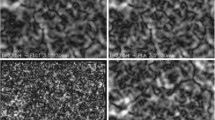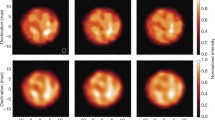Abstract
To study the evolution of large convective cells known as supergranules, a solar telescope was set up at Maitri, Indian permanent station in Antarctica region, during the local summer months (December 1989 through March 1990). A continuous sequence of calcium K-line filtergrams for 106 hours spaced at intervals of about 10 min was obtained. The analysis of the data indicates that the most probable lifetime of the calcium-K network is about 22 hours. The lifetime depends upon the size of the cell and is larger for bigger cells. The data also show that cells (of a given size) associated with remnant magnetic field regions live longer than those in the field-free region. This may mean that the magnetic field plays an important role in the confinement of these structures.
Similar content being viewed by others
References
Duvall, T. L., Jr.: 1980,Solar Phys. 66, 213.
Howard, R.: 1959,Astrophys. J. 130, 193.
Janssens, T. J.: 1970,Solar Phys. 11, 222.
Leighton, R. B.: 1959,Astrophys. J. 130, 366.
Leighton, R. B., Noyes, R. W., and Simon, G. W.: 1962,Astrophys. J. 135, 474.
Livingston, W. C. and Orrall, R. Q.: 1974,Solar Phys. 39, 301.
Rogers, E. H.: 1970,Solar Phys. 13, 57.
Schrijver, C. J.: 1989,Solar Phys. 122, 193.
Simon, G. W. and Leighton, R. B.: 1964,Astrophys. J. 140, 1120.
Singh, J. and Bappu, M. K. V.: 1981,Solar Phys. 71, 161.
Smithson, R. C.: 1973,Solar Phys. 29, 365.
Snedecor, G. W. and Cochran, W. G.: 1967,Statistical Methods, Oxford and IBH Publishing Co., p. 557.
Wang, H.: 1988, Ph.D. Thesis, California Institute of Technology.
Worden, S. P. and Simon, G. W.: 1976,Solar Phys. 46, 73.
Author information
Authors and Affiliations
Rights and permissions
About this article
Cite this article
Singh, J., Nagabhushana, B.S., Babu, G.S.D. et al. Study of calcium-K network evolution from Antarctica. Sol Phys 153, 157–167 (1994). https://doi.org/10.1007/BF00712498
Received:
Revised:
Issue Date:
DOI: https://doi.org/10.1007/BF00712498




